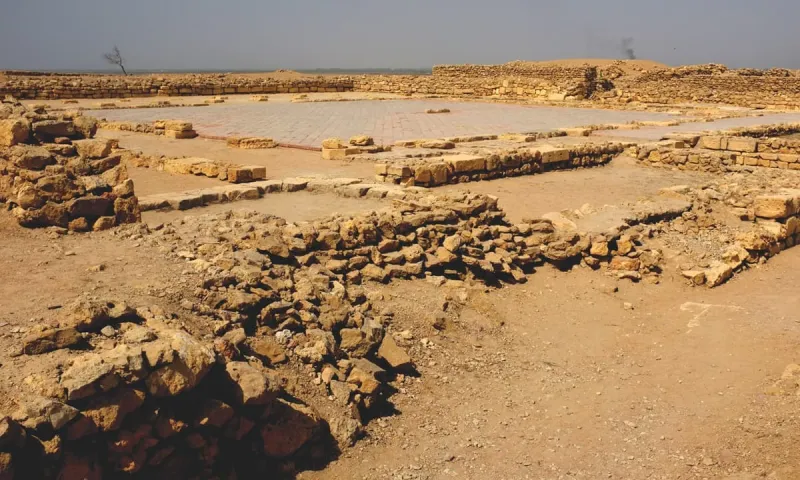
When Sassi awoke from her love-induced slumber, her beloved Punnu was already gone. Lost in the legend along with him was Sassi’s abode — the city of Banbhore or Bhambore that her father ruled.
Henry Cousens, a 75-year-old retired British scholar of antiquities, arrived in 1929 at a site known as Sassi jo takar (Sassi’s hill). It was believed to be her lost city. Cousens found little of archaeological value at Sassi jo takar — a vast barren stretch of desert land about 65 kilometres south-east of Karachi. He did not feel the need, or reason, to excavate the site, yet his visit ignited interest and curiosity about its origin.
A little less than thirty years later, the site intrigued F A Khan, the founding head of Pakistan’s archaeology department. He led a team of researchers that excavated the site between 1958 and 1966 and concluded that it was not Banbhore but Daybul or Debal, the fort where the Arab general Muhammad bin Qasim had defeated Raja Dahir, a local Hindu ruler, in the year 711.
Daybul –derived from the Sanskrit word devalaya (meaning “abode of God”) – was an ancient harbour city in the Indus delta. It was described in the journals of Arab and Persian travellers of the 10th century for its fishing vessels, thriving commerce, flourishing centres of Islamic learning and arid landscape.
Nearly half a century after Khan’s excavation, the site is under the scanner again. A team comprising Pakistani, French and Italian researchers and archaeologists started exploring it in 2010, under a licence from the Sindh antiquities department. Historians Valeria Fiorani Piacentini and Monique Kervran, respectively from Italy and France, and archaeologists Kaleem Ullah Lashari (a former secretary of the Sindh Department of Antiquities) and Asma Ibrahim (director of the State Bank of Pakistan Museum) are the members of this team. A handful of young graduates from different universities in Sindh are assisting them.
The need for excavation emerged after the unearthing of a number of fortresses along the Indus delta. Additionally, in 2004, the pots recovered from the site were found to be inaccurately dated, casting doubt on the findings that could have led Khan to declare the site to be Daybul.
Another reason to “open the earth”, as Lashari puts it, was the loss of previous records: only 17 pages of Khan’s notes survive.
This article was published in the Herald’s April 2016 issue. Read more here.